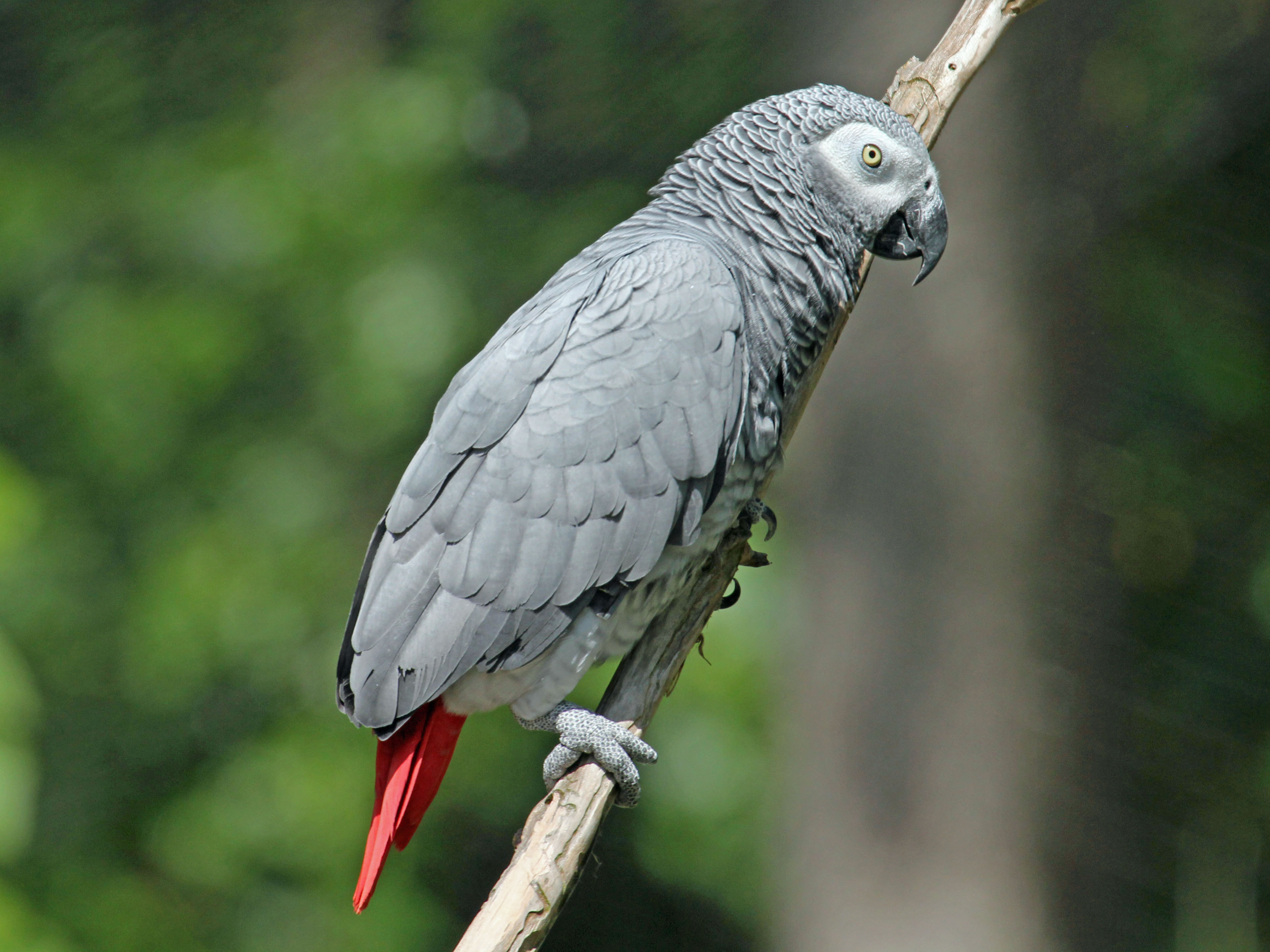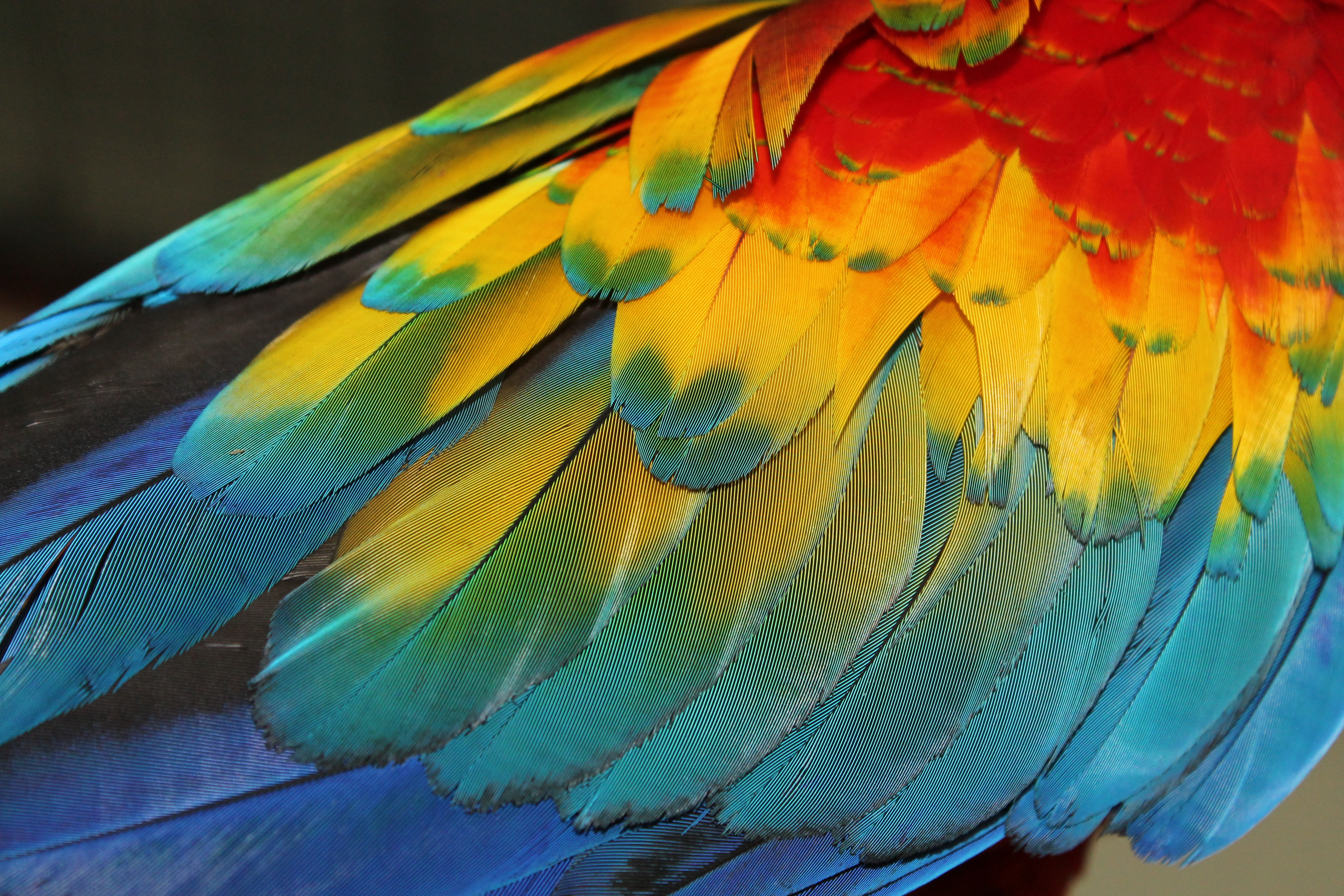|
Wild Bird Conservation Act
The international trade in parrots is a lucrative enterprise, and forms an important part of the international wildlife trade. As parrots have become increasingly endangered, many countries have placed restrictions on the trade and/or prohibited the trade altogether. Despite the restriction on trade in many countries however, the market still operates both legally and illegally. Approximately 2,600 of the more than 9,600 bird species in existence are subject to trade, FAO. 2011. Trade in Wild Birds and Related Bird Movements in Latin America and the Caribbean' Animal Production and Health Paper No. 166. Rome. and 20% of these species belong to the order Psittaciformes (parrots). In 2009, 3.9% of households in the United States owned birds, which equated to 11,199,000 pet birds in total, and 75% of these belonged to the Psittaciforme order. International trade Top exporters The greatest number of parrots came from Latin American countries (mostly Guyana, Suriname and Argentina) ... [...More Info...] [...Related Items...] OR: [Wikipedia] [Google] [Baidu] |
Amazona Dufresniana -two Captive-8a-2c
Amazon parrots are parrots in the genus ''Amazona''. They are medium-sized, short-tailed parrots native to the Americas, with their range extending from South America to Mexico and the Caribbean. ''Amazona'' is one of the 92 genera of parrots that make up the order Psittaciformes and is in the family Psittacidae, one of three families of true parrots. It contains about thirty species. Most amazons are predominantly green, with accenting colors that depend on the species, and they can be quite vivid. They feed primarily on seeds, nuts, and fruits, supplemented by leafy matter. Many amazons have the ability to mimic human speech and other sounds. Partly because of this, they are popular as pets or companion parrots, and a small industry has developed in breeding parrots in captivity for this market. This popularity has led to many parrots being taken from the wild to the extent that some species have become threatened. The United States and the European Union have made the captur ... [...More Info...] [...Related Items...] OR: [Wikipedia] [Google] [Baidu] |
Blue-and-yellow Macaw
The blue-and-yellow macaw (''Ara ararauna''), also known as the blue-and-gold macaw, is a large South American parrot with mostly blue top parts and light orange underparts, with gradient hues of green on top of its head. It is a member of the large group of neotropical parrots known as macaws. It inhabits forest (especially varzea, but also in open sections of ''terra firme'' or unflooded forest), woodland and savannah of tropical South America. They are popular in aviculture because of their striking color, ability to talk, ready availability in the marketplace, and close bonding to humans. They can also live for 65–70 years. Taxonomy The blue-and-yellow macaw was formally described by the Swedish naturalist Carl Linnaeus in 1758 in the tenth edition of his ''Systema Naturae''. He placed it with all the other parrots in the genus ''Psittacus'' and coined the binomial name ''Psittacus ararauna''. This macaw is now one of the eight extant species placed in the genus ''Ara' ... [...More Info...] [...Related Items...] OR: [Wikipedia] [Google] [Baidu] |
National Academy Of Sciences
The National Academy of Sciences (NAS) is a United States nonprofit, non-governmental organization. NAS is part of the National Academies of Sciences, Engineering, and Medicine, along with the National Academy of Engineering (NAE) and the National Academy of Medicine (NAM). As a national academy, new members of the organization are elected annually by current members, based on their distinguished and continuing achievements in original research. Election to the National Academy is one of the highest honors in the scientific field. Members of the National Academy of Sciences serve '' pro bono'' as "advisers to the nation" on science, engineering, and medicine. The group holds a congressional charter under Title 36 of the United States Code. Founded in 1863 as a result of an Act of Congress that was approved by Abraham Lincoln, the NAS is charged with "providing independent, objective advice to the nation on matters related to science and technology. ... to provide scien ... [...More Info...] [...Related Items...] OR: [Wikipedia] [Google] [Baidu] |
Pueblo
In the Southwestern United States, Pueblo (capitalized) refers to the Native tribes of Puebloans having fixed-location communities with permanent buildings which also are called pueblos (lowercased). The Spanish explorers of northern New Spain used the term ''pueblo'' to refer to permanent indigenous towns they found in the region, mainly in New Mexico and parts of Arizona, in the former province of Nuevo México. This term continued to be used to describe the communities housed in apartment structures built of stone, adobe mud, and other local material. The structures were usually multi-storied buildings surrounding an open plaza, with rooms accessible only through ladders raised/lowered by the inhabitants, thus protecting them from break-ins and unwanted guests. Larger pueblos were occupied by hundreds to thousands of Puebloan people. Various federally recognized tribes have traditionally resided in pueblos of such design. Later Pueblo Deco and modern Pueblo Revival architectu ... [...More Info...] [...Related Items...] OR: [Wikipedia] [Google] [Baidu] |
Aztecs
The Aztecs () were a Mesoamerican culture that flourished in central Mexico in the post-classic period from 1300 to 1521. The Aztec people included different Indigenous peoples of Mexico, ethnic groups of central Mexico, particularly those groups who spoke the Nahuatl, Nahuatl language and who dominated large parts of Mesoamerica from the 14th to the 16th centuries. Aztec culture was organized into city-states (''altepetl''), some of which joined to form alliances, political confederations, or empires. The Aztec Empire was a confederation of three city-states established in 1427: Tenochtitlan, city-state of the Mexica or Tenochca; Texcoco (altepetl), Texcoco; and Tlacopan, previously part of the Tepanec empire, whose dominant power was Azcapotzalco (altepetl), Azcapotzalco. Although the term Aztecs is often narrowly restricted to the Mexica of Tenochtitlan, it is also broadly used to refer to Nahuas, Nahua polities or peoples of central Pre-Columbian Mexico, Mexico in the preh ... [...More Info...] [...Related Items...] OR: [Wikipedia] [Google] [Baidu] |
Psittacine
Psittacinae is a subfamily of Afrotropical or Old World parrots, native to sub-Saharan Africa, which include twelve species and two extant genera. Among the species is the iconic grey parrot. The ''Poicephalus'' are usually green birds with different colored heads; the larger ''Psittacus'' are light grey with red tails. African parrots (at least the grey parrot) have been known in Europe since Roman times. The African parrots, unlike their Neotropical cousins, are polyphyletic: ''Agapornis'' of Africa and Madagascar was found to be the sister group to '' Loriculus'' of Australasia and Indo-Malayasia and together they clustered with the Australasian ''Loriinae'', ''Cyclopsittacini'' and '' Melopsittacus''. ''Poicephalus'' and ''Psittacus'' from mainland Africa formed the sister group of the Neotropical ''Arinae'' and '' Coracopsis'' from Madagascar and adjacent islands may be the closest relative of ''Psittrichas'' from New Guinea. Taxonomy This subfamily, together with ... [...More Info...] [...Related Items...] OR: [Wikipedia] [Google] [Baidu] |
Psittacidae
The family Psittacidae or holotropical parrots is one of three families of true parrots. It comprises the roughly 10 species of subfamily Psittacinae (the Old World or Afrotropical parrots) and 157 of subfamily Arinae (the New World or Neotropical parrots), as well as several species that have gone extinct in recent centuries. Some of the most iconic birds in the world are represented here, such as the blue-and-gold macaw among the New World parrots and the grey parrot among the Old World parrots. Distribution All of the parrot species in this family are found in tropical and subtropical zones and inhabit Mexico, Central and South America, the Caribbean islands, sub-Saharan Africa, the island of Madagascar, the Arabian Peninsula, Southeast Asia, Australia and Oceania. Two parrots, one extinct and the other extirpated, formerly inhabited the United States. Evolutionary history This family probably had its origin early in the Paleogene period, 66–23 million years ago (M ... [...More Info...] [...Related Items...] OR: [Wikipedia] [Google] [Baidu] |
Defenders Of Wildlife
Defenders of Wildlife is a 501(c)(3) non-profit conservation organization based in the United States. It works to protect all native animals and plants throughout North America in their natural communities. Background Defenders of Wildlife is a national conservation organization that works to conserve wildlife, protect wildlife habitat and safeguard biodiversity. Founded in 1947, Defenders of Wildlife was originally called Defenders of Fur Bearers, and worked to preserve wild animals. Although its work has broadened to include wildlife habitat and biodiversity, protecting wild animals—especially large carnivores—remains a central goal. The organization is headquartered in Washington, D.C., with field offices in Anchorage, Sacramento, Denver, Santa Fe, New Mexico, Asheville, North Carolina and Seattle. The current president and CEO is Jamie Rappaport Clark, who has been with Defenders since 2004 and took on her current role in 2011. Clark holds a B.S. in wildlife biology from ... [...More Info...] [...Related Items...] OR: [Wikipedia] [Google] [Baidu] |
Military Macaw
The military macaw (''Ara militaris'') is a large parrot and a medium-sized macaw that gets its name from its predominantly green plumage resembling a military parade uniform. It is native to forests of Mexico and South America and though considered vulnerable in the wild, it is still commonly found in the pet trade industry. Taxonomy The military macaw was formally described in 1766 by the Swedish naturalist Carl Linnaeus in the twelfth edition of his ''Systema Naturae''. He placed it with all the other parrots in the genus ''Psittacus'' and coined the binomial name ''Psittacus militaris''. Linnaeus did not specify a type locality but this was designated as Colombia in 1912. The military macaw is now one of ten parrots placed in the genus ''Ara'' which was erected in 1799 by the French naturalist Bernard Germain de Lacépède. The genus name is from ''ará'' meaning "macaw" in the Tupi language of Brazil. The word is an onomatopoeia based on the sound of their call. The speci ... [...More Info...] [...Related Items...] OR: [Wikipedia] [Google] [Baidu] |
Scarlet Macaw
The scarlet macaw (''Ara macao'') is a large red, yellow, and blue Central and South American parrot, a member of a large group of Neotropical parrots called macaws. It is native to humid evergreen forests of the Neotropics. Its range extends from south-eastern Mexico to Peru, Ecuador, Colombia, Bolivia, Venezuela and Brazil in lowlands of (at least formerly) up to , the Caribbean island of Trinidad, as well as the Pacific island of Coiba. Formerly, it ranged north to southern Tamaulipas. In some areas, it has suffered local extinction because of habitat destruction, or capture for the parrot trade, but in other areas, it remains fairly common. It is the national bird of Honduras. Like its relative the blue-and-yellow macaw, the scarlet macaw is a popular bird in aviculture as a result of its striking plumage. Taxonomy The scarlet macaw was formally described by the Swedish naturalist Carl Linnaeus in 1758 in the tenth edition of his ''Systema Naturae'' under the binomial name ' ... [...More Info...] [...Related Items...] OR: [Wikipedia] [Google] [Baidu] |
Blue-throated Macaw
The blue-throated macaw (''Ara glaucogularis''), also known as the Caninde macaw or Wagler's macaw, is a macaw endemic to a small area of north-central Bolivia, known as Los Llanos de Moxos. In 2014 this species was designated by law as a natural patrimony of Bolivia, where it is known as ''barba azul'', which means 'blue beard' in Spanish. Until 2010, it was hunted by natives to make feathered "Moxeño" headdresses for "machetero" ritual dances. Recent population and range estimates suggest that about 350–400 individuals remain in the wild. Its demise was brought upon by nesting competition, avian predation, and a small native range, exacerbated by indigenous hunting and capture for the pet trade. Although plentiful in captivity, it is Critically Endangered in the wild and is protected by trading prohibitions. The name "Wagler's macaw" is in honor of German herpetologist Johann Georg Wagler, who processed many of Johan Baptist von Spix's Brazilian collections at the Ludwi ... [...More Info...] [...Related Items...] OR: [Wikipedia] [Google] [Baidu] |
Great Green Macaw
The great green macaw (''Ara ambiguus''), also known as Buffon's macaw or the great military macaw, is a Central and South American parrot found in Nicaragua, Honduras, Costa Rica, Panama, Colombia and Ecuador. Two allopatric subspecies are recognized; the nominate subspecies, ''Ara ambiguus'' ssp. ''ambiguus'', occurs from Honduras to Colombia, while ''Ara ambiguus'' ssp. ''guayaquilensis'' appears to be endemic to remnants of dry forests on the southern Pacific coast of Ecuador. The nominate subspecies lives in the canopy of wet tropical forests and in Costa Rica is usually associated with the ''almendro'' tree, '' Dipteryx oleifera''. Taxonomy The great green macaw belongs to the genus ''Ara'', which includes other large parrots, such as the scarlet macaw, the military macaw, and the blue-and-yellow macaw. This bird was first described and illustrated in 1801 by the French naturalist François Le Vaillant for his ''Histoire Naturelle Des Perroquets'' under the name "le gra ... [...More Info...] [...Related Items...] OR: [Wikipedia] [Google] [Baidu] |










